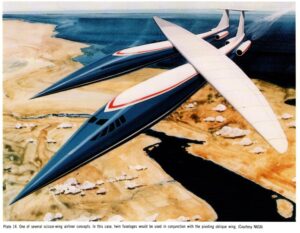
We’ve all heard stories of people looking down at their phones to check a notification while driving and bumping into the car in front of them, or even worse. With today’s high connectivity, drivers have become more distracted than ever. Luckily, Augmented reality (AR) can help prevent distracted driving and ease the driving experience overall. AR can also help automotive companies optimize their car production and sales processes with the use of 3D prototypes and interactive showrooms. Whether by augmenting the user experience or supporting the manufacturing process, AR has the potential to revolutionize the automotive industry in numerous ways.
HUDs are AR projections on the front windshield of a car in front of the driver’s seat. These displays can include features such as driving speed and road work ahead, cellular notifications, or entertainment features like the radio station. Companies like Hudway have already begun to sell HUDs. Hudway’s HUD device easily fits into most cars and plugs into a 12V socket. The display shows driving speed as well as navigation directions. Users can connect their phones to the device, allowing the HUD to show notifications and calls as well. Users can select which notifications they’d like to appear on the display through the Hudway app.
This development helps decrease distracted driving by eliminating the need for drivers to look down at their phones. Hudway also provides users camera add-ons that project night vision and rear parking assistance. Combined with AI, HUDs can alert users to upcoming road obstacles before they occur. BMW has also created a prototype for a Next 100 HUD that combines AR with AI and notifies drivers about upcoming obstacles like bikers. HUDs give drivers a more seamless driving experience and increase road safety.
1. How VR could bring transhumanism to the masses
2. How Augmented Reality (AR) is Reshaping the Food Service Industry
3. ExpiCulture — Developing an Original World-Traveling VR Experience
While the typical car manufacturing process requires the creation and testing of multiple prototypes, AR can eliminate the need for such physical prototypes, reduce costs and increase manufacturing speed and efficiency. Automobile designers can create AR renderings of their cars, swapping out various parts in these renderings to determine the best car design before creating a physical prototype. Instead of conducting physical tests of each prototype, manufacturers can input their AR renderings into realistic environments and test cars virtually, decreasing the total number of physical tests necessary to determine car safety. Volkswagen already uses AR in its car design process.
AR also makes assembly easier for workers, speeding up the physical manufacturing process. AR projections of assembly instructions onto tablets or smart glasses gives workers more detailed information on how to best assemble cars, reducing human error. Volvo currently uses AR in its manufacturing process, providing assemblers with glasses that use AR to portray instructions and documentation, reducing distractions from the work process.
- 100
- 3d
- 7
- AI
- All
- Allowing
- app
- AR
- Augmented Reality
- augmented reality (ar)
- automotive
- automotive industry
- BEST
- car
- cars
- cases
- Companies
- Connectivity
- Costs
- Creating
- CZ
- Design
- Development
- driving
- efficiency
- Enterprise
- Enterprise AR
- Entertainment
- EU
- EV
- EY
- Features
- food
- food service
- glasses
- GV
- High
- How
- How To
- HP
- hr
- HTTPS
- ia
- Increase
- industry
- information
- interactive
- manufacturing
- medium
- Navigation
- notification
- parking
- People
- phones
- Production
- project
- Radio
- Reality
- reduce
- road safety
- Safety
- sales
- seamless
- sell
- smart
- speed
- Stories
- test
- Testing
- tests
- users
- vision
- vr
- Work
- workers








